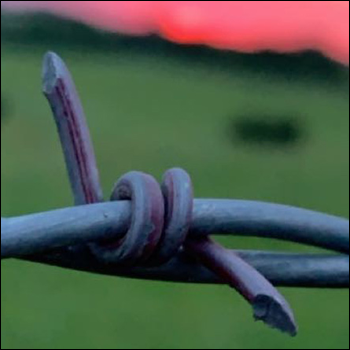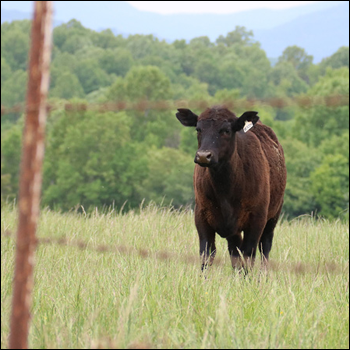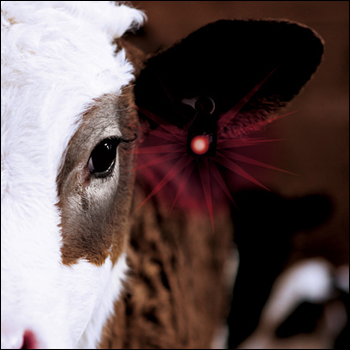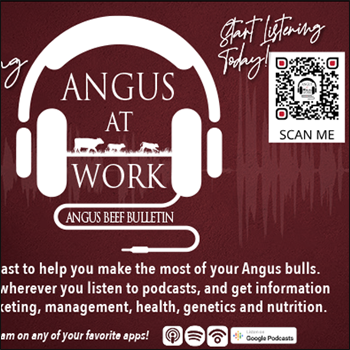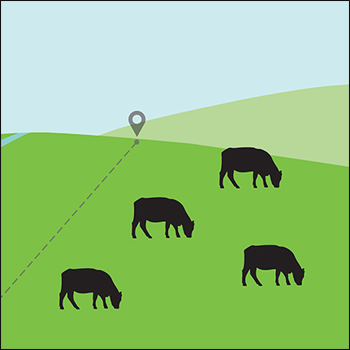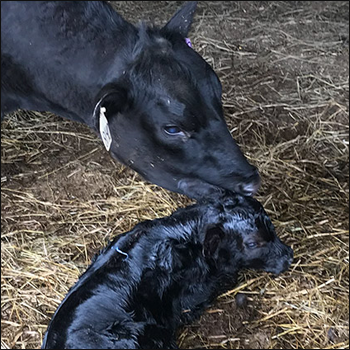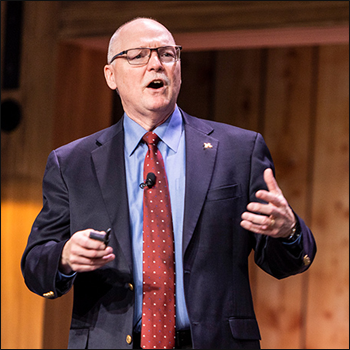
The Link
What will the feeder market look like?
I was at a bull sale the other day and this young boy was eyeing some bulls in the pen. He had a sale book and seemed to be studying it pretty hard. His dad had moved on to another pen. An older gentleman was watching the boy and walked over to ask what he was studying so hard. The boy said he was looking for a bargain. The older gentleman leaned down and said, “You want to remember two things: A good bull is 50% of your cow herd, and a bad bull is 100% of your herd.”
Now, good bulls come in many shapes and sizes, but they all seem to be one color these days — black, black or more black.
Some black-hided calves produce outstanding steaks, while other black calves produce good hamburger. Buyers today are getting picky. They want to make sure when they buy calves to make hamburger they are not paying too much. They want documented information about the genetics and carcass potential under the black hide.
Plus, the volatility in all these markets will make buying choices more difficult. The good news is AngusLinkSM and the Genetic Merit Scorecard® (GMS) continue to help buyers determine the genetic value of feeder calves in the marketplace on sale day. Prices being paid for feeder calves enrolled in AngusLink have brought more money than calves not enrolled during the video sales early this year. Premiums on program cattle are still very similar to the 2021 summer video sale season premium at $13 per hundredweight (cwt.). Taking market fluctuations out of the mix, the premiums for program cattle and cattle with verified genetic merit are increasing over time.
Good genetics are like buying land. When you look back on it, the initial price always seems inexpensive. The value proposition in a good bull that can put pounds on your calves with outstanding carcass quality vs. buying a bull that will just settle your cows isn’t really a bargain.
In the past, in our commodity business it was easy to find buyers for every class of cattle. Today, the number of buyers interested in purchasing below-average genetic-merit calves is declining. Buyers are looking to reduce risk. The best way to do that is through verified genetic merit (with the Genetic Merit Scorecard) and increased market access and market flexibility [Non-Hormone Treated Cattle (NHTC), NeverEver 3 (NE3), Global Animal Partnership (GAP), etc.].
Producers who invest in top-end Angus genetics continue to be rewarded for their investment when they use the Genetic Merit Scorecard coupled with the AngusVerified claim. If you are feeding and raising calves, you might as well feed, raise and document ones that have the potential for premiums. Documented information equals documented results.
This year more than ever, we are going to wonder what will the feeder-calf market be when I sell my calves? Most of us have an insurance policy for our farm, trucks and even our life. Why not take out a little insurance on your calf crop? The rate of return over the years on calves enrolled in value-added programs like AngusLink provide a good return on your investment. Market changes can be hard to predict. The good news is value-added programs can help ease that volatility.
Combine the power of AngusLink and the American Angus Association’s database to provide potential buyers with more buying opportunity on your feeder calves. There are a variety of claims available when you enroll in AngusLink — from NHTC to AngusVerified coupled with the Genetic Merit Scorecard.
AngusLink-enrolled cattle will be promoted through the listing service once producers have provided information to complete the marketing document. Providing value-added marketing programs and cost-effective verification services to commercial partners further supports the power of Angus-influenced feeder cattle in today’s marketplace.
AngusLink has unrivaled customer service, comprehensive marketing support, and has the mission of helping commercial producers be more profitable. This combination provides cattlemen with an unmatched market advantage. You won’t need to study long to realize the real bargain is top-notch Angus genetics combined with the marketing power of AngusLink. Call today to learn more about how AngusLink can be incorporated into your feeder marketing program.
Editor’s note: Ginette Gottswiller is the director of verification services for the American Angus Association.

Angus Proud
In this Angus Proud series, Editorial Intern Jessica Wesson provides insights into how producers across the country use Angus genetics in their respective environments.
 Angus Proud: Scott Sproul
Angus Proud: Scott Sproul
Oklahoma operation learned wisdom of moving calving season to better suit their marketing needs.
 Angus Proud: Bubba Crosby
Angus Proud: Bubba Crosby
Fall-calving Georgia herd uses quality and co-ops to market calves.
 Angus Proud: Jim Moore
Angus Proud: Jim Moore
Arkansas operation retains ownership through feeding and values carcass data.
 Angus Proud: Les Shaw
Angus Proud: Les Shaw
South Dakota operation manages winter with preparation and bull selection.
 Angus Proud: Jeremy Stevens
Angus Proud: Jeremy Stevens
Nebraska operation is self-sufficient for feedstuffs despite sandy soil.

